Abstract
The comparative sensitivity of blastospores and conidiospores of Histoplasma capsulatum to hydrogen peroxide, to hydrogen peroxide and halides, and to a combination of hydrogen peroxide and halide with the enzyme myeloperoxidase was studied. Blastospores of different strains of H. capsulatum varied in their sensitivity to hydrogen peroxide. This variation correlated with the amount of catalase in cell-free extracts from the strains. Blastospores and conidiospores of a single isolate were about equally susceptible to hydrogen peroxide, but this sensitivity could obviously vary with the catalase content of the two types of spores. Halides augmented the antifungal activity of hydrogen peroxide for both types of spores. Iodide was far more efficient in this regard than was chloride. A crude granule lysate from guinea pig polymorphonuclear leukocytes was quite inhibitory to blastospore but not to conidiospore germination. A study of the myeloperoxidase activity of such preparations against blastospores was thus precluded. A sample of a very highly purified human myeloperoxidase functioned in the presence of hydrogen peroxide and either iodide or chloride to prevent germination of both blastospores and conidiospores. The preparation had no toxicity for spores apart from its interaction with hydrogen peroxide and halides.
Full text
PDF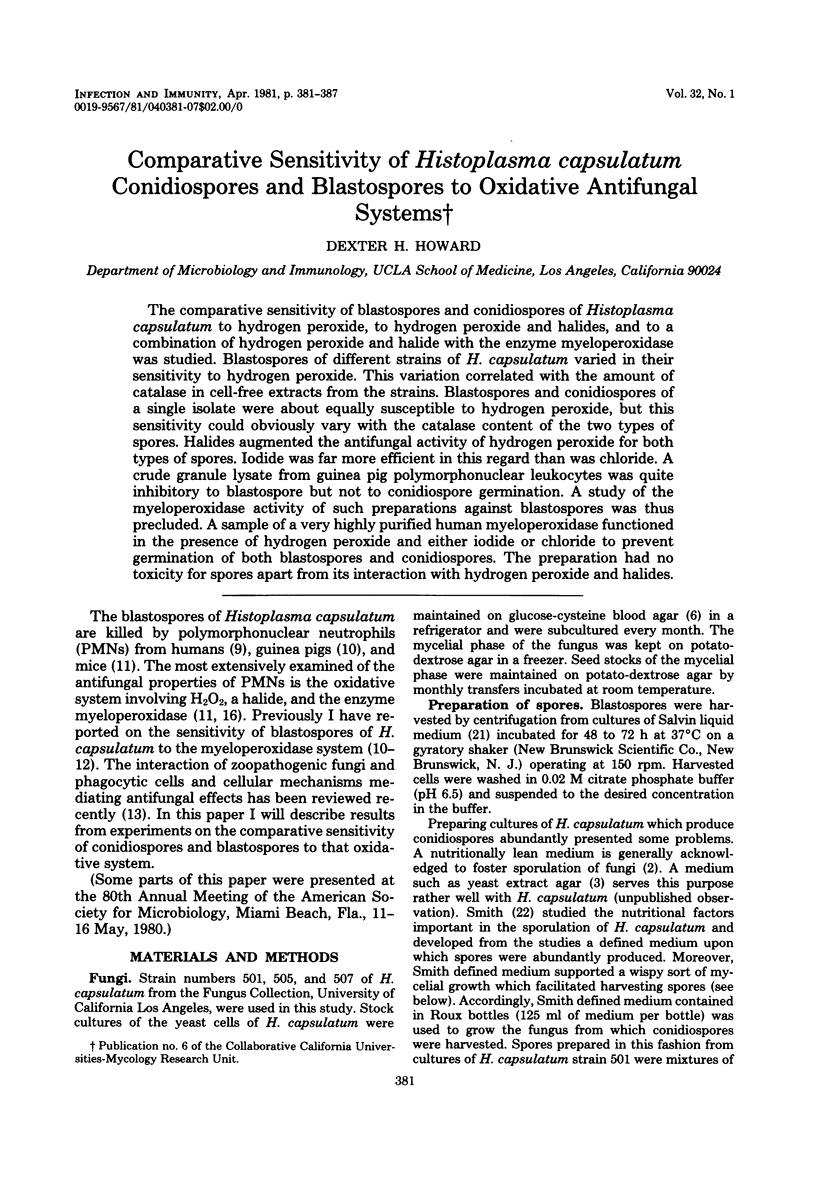
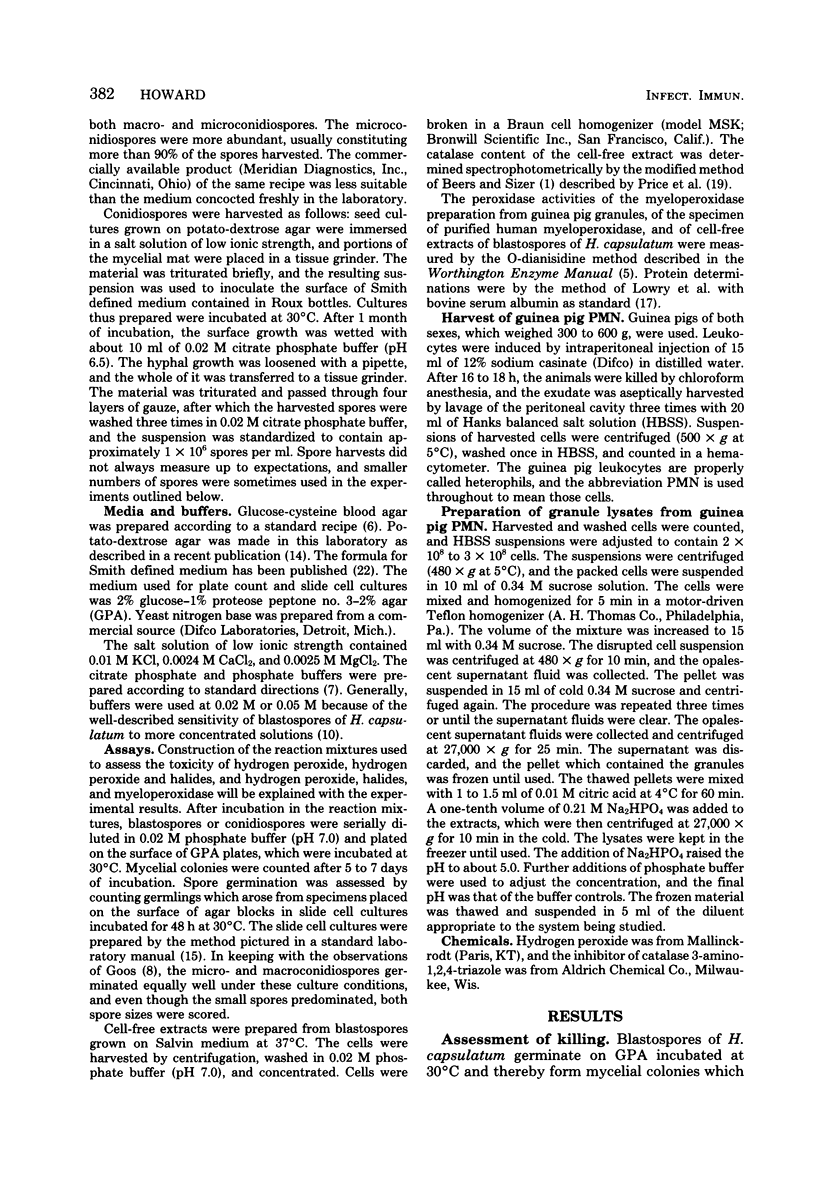
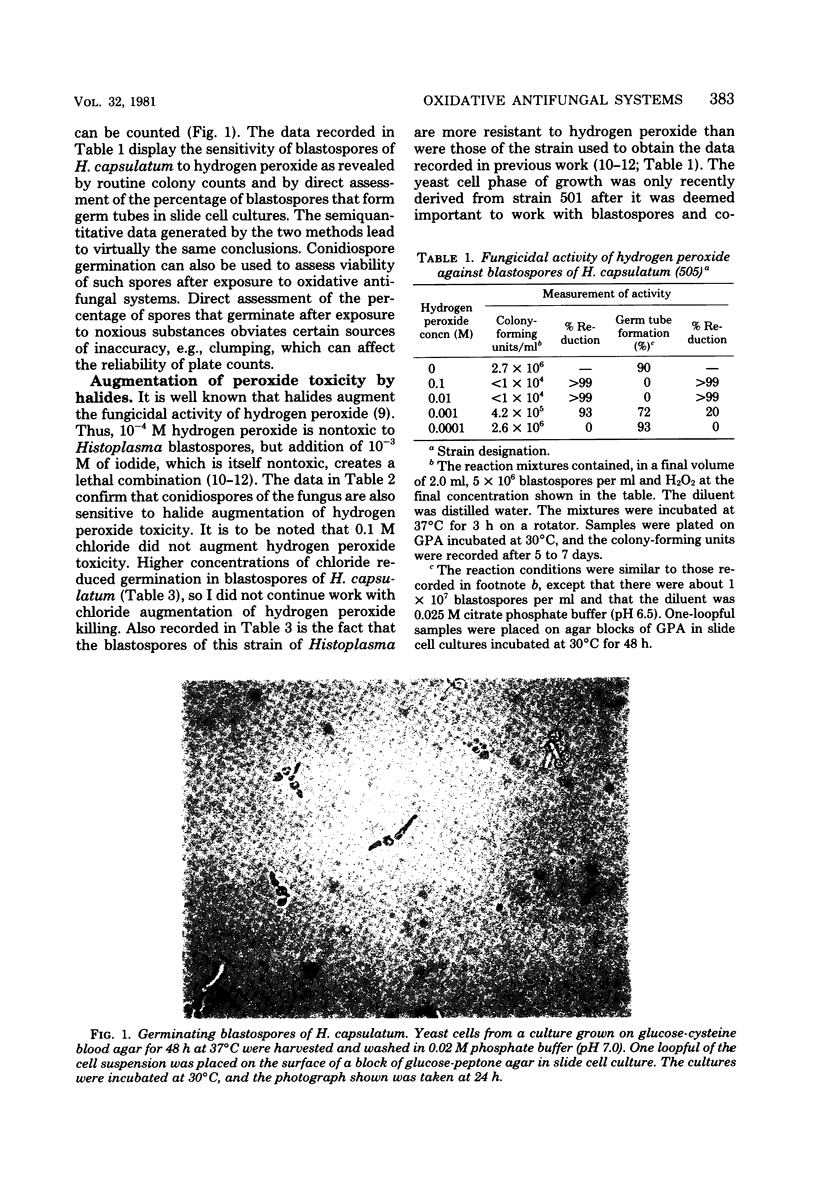
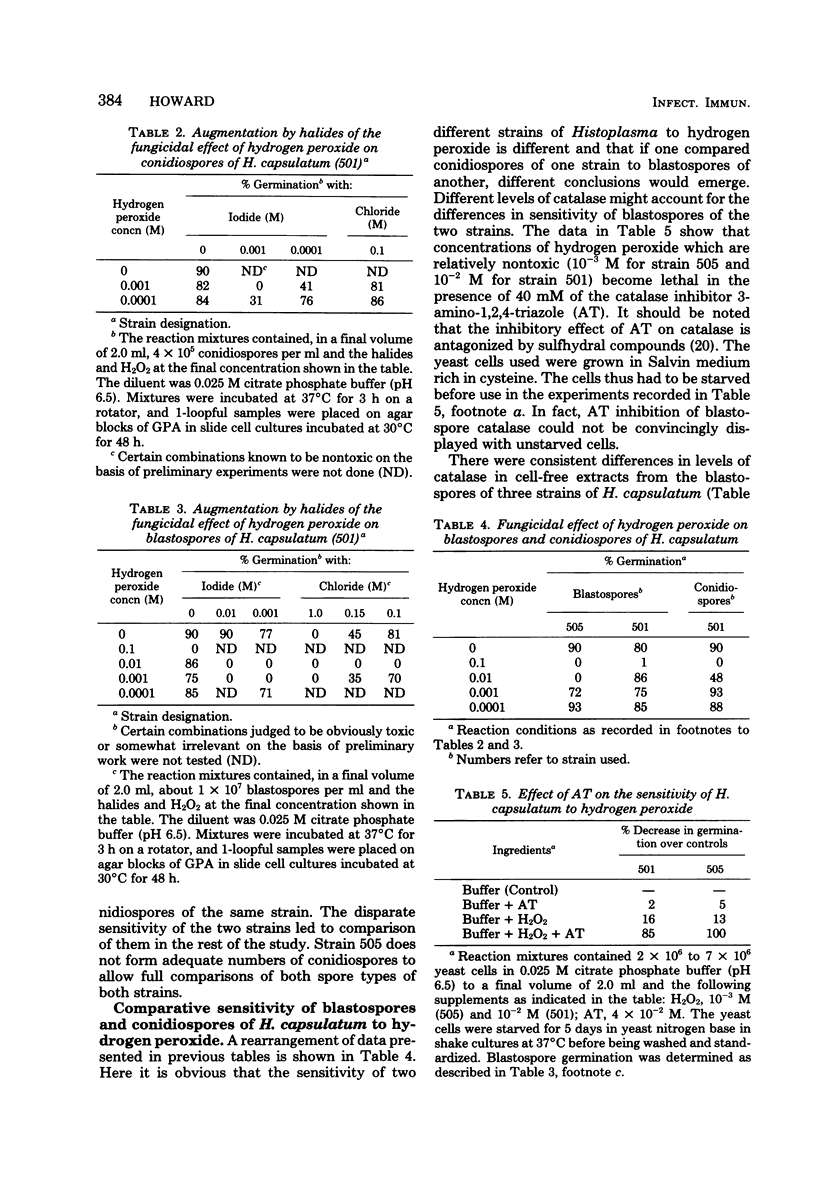
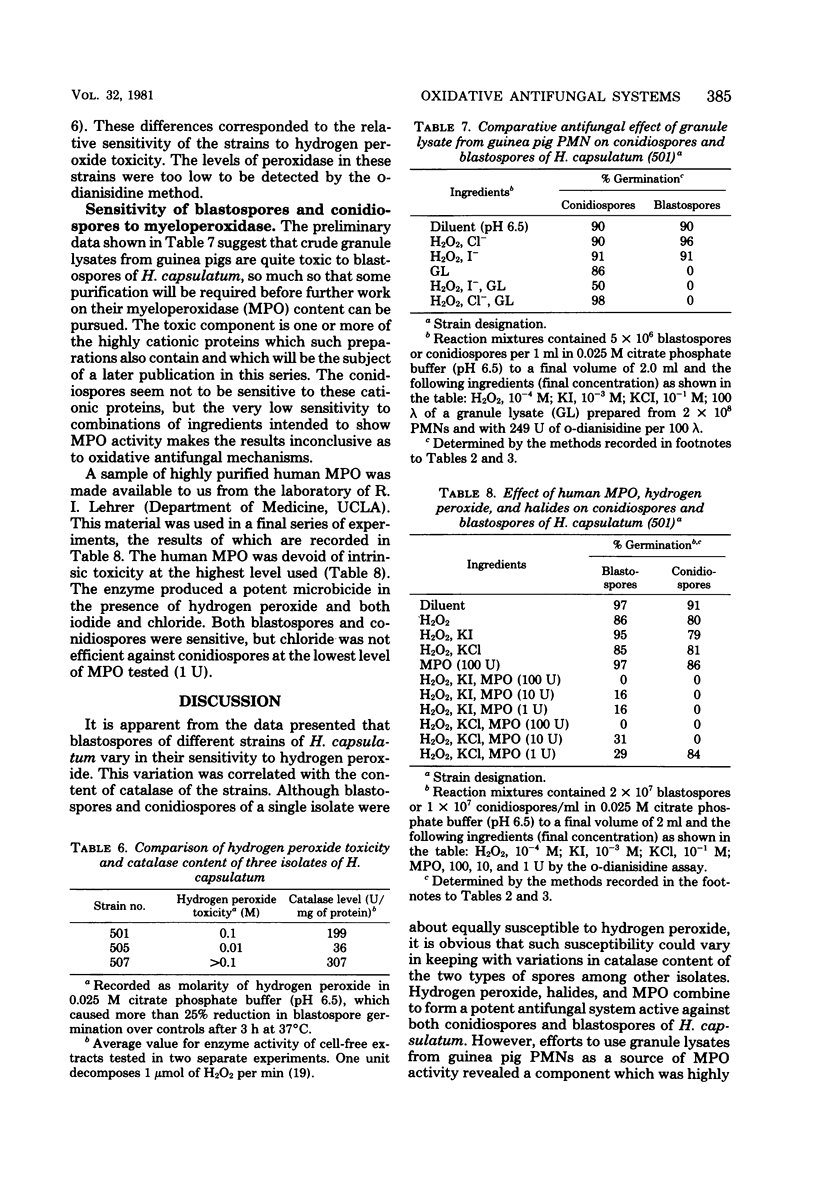
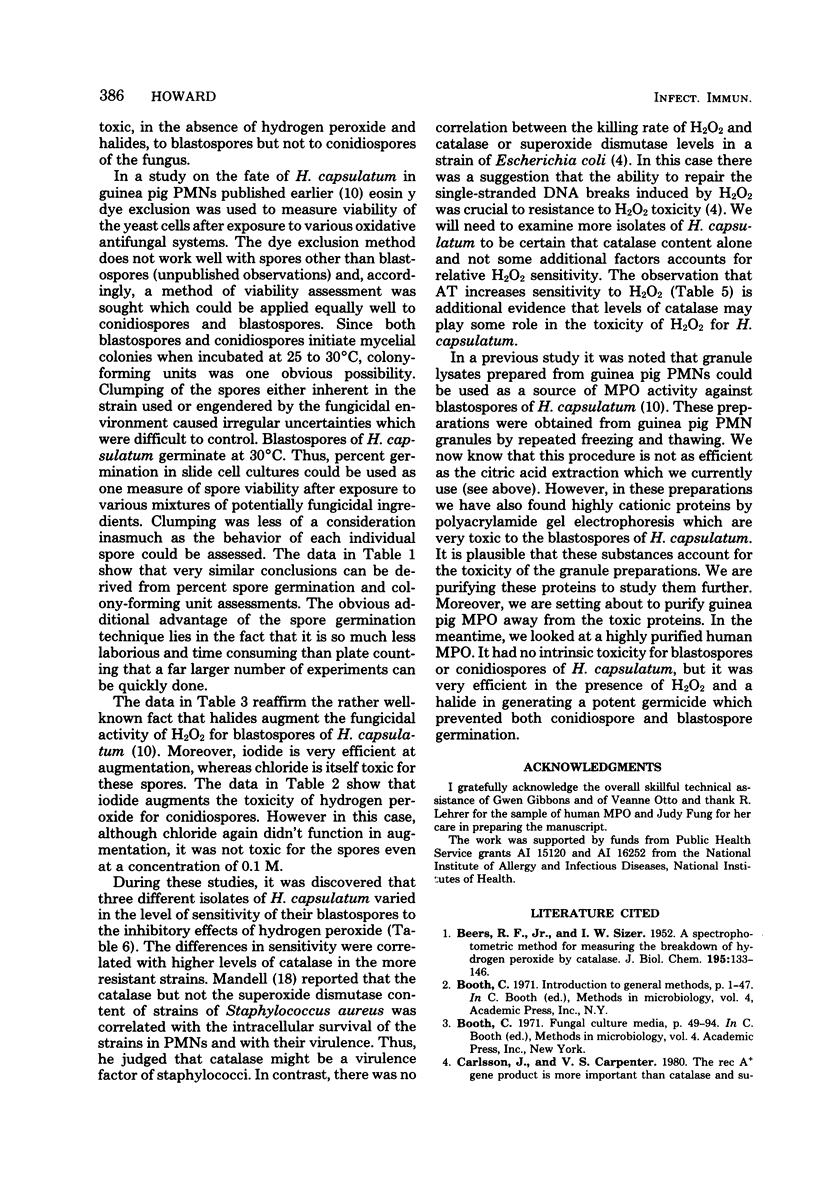
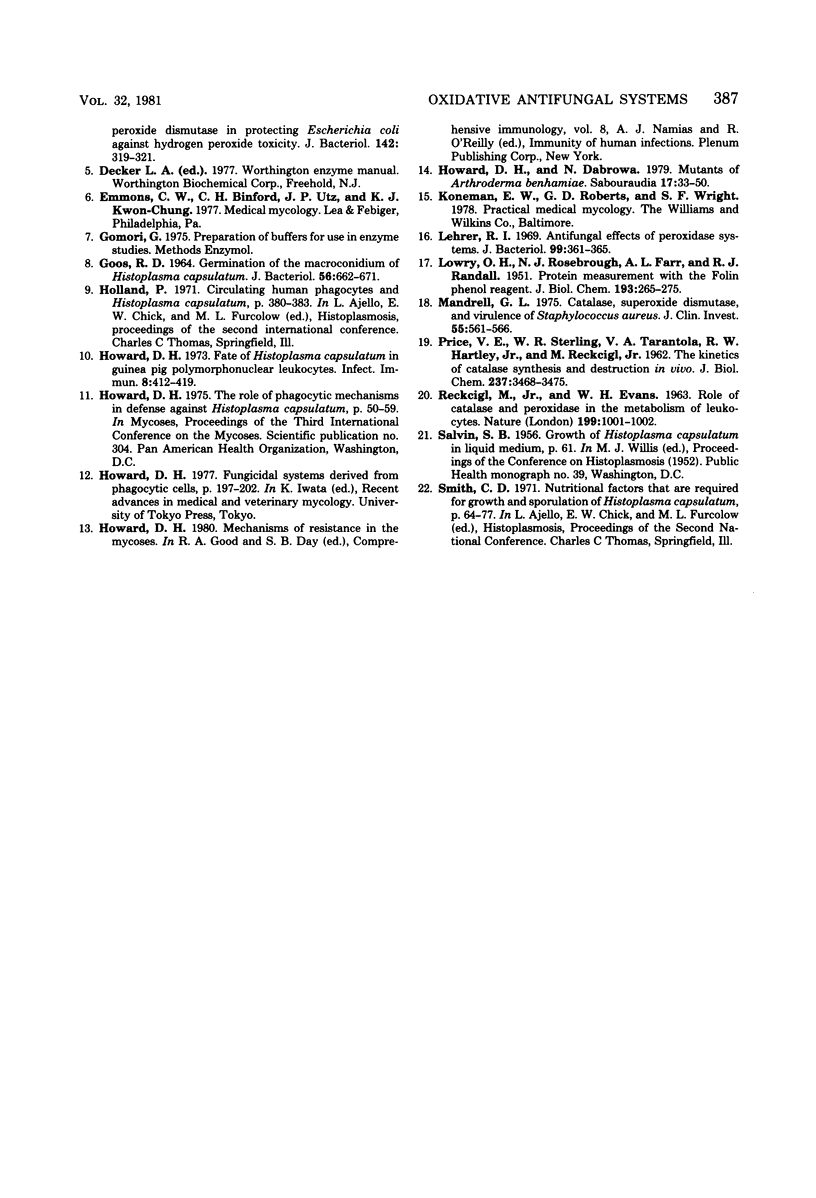
Images in this article
Selected References
These references are in PubMed. This may not be the complete list of references from this article.
- BEERS R. F., Jr, SIZER I. W. A spectrophotometric method for measuring the breakdown of hydrogen peroxide by catalase. J Biol Chem. 1952 Mar;195(1):133–140. [PubMed] [Google Scholar]
- Carlsson J., Carpenter V. S. The recA+ gene product is more important than catalase and superoxide dismutase in protecting Escherichia coli against hydrogen peroxide toxicity. J Bacteriol. 1980 Apr;142(1):319–321. doi: 10.1128/jb.142.1.319-321.1980. [DOI] [PMC free article] [PubMed] [Google Scholar]
- Howard D. H., Dabrowa N. Mutants of Arthroderma benhamiae. Sabouraudia. 1979 Mar;17(1):35–50. [PubMed] [Google Scholar]
- Howard D. H. Fate of Histoplasma capsulatum in guinea pig polymorphonuclear leukocytes. Infect Immun. 1973 Sep;8(3):412–419. doi: 10.1128/iai.8.3.412-419.1973. [DOI] [PMC free article] [PubMed] [Google Scholar]
- LOWRY O. H., ROSEBROUGH N. J., FARR A. L., RANDALL R. J. Protein measurement with the Folin phenol reagent. J Biol Chem. 1951 Nov;193(1):265–275. [PubMed] [Google Scholar]
- Lehrer R. I. Antifungal effects of peroxidase systems. J Bacteriol. 1969 Aug;99(2):361–365. doi: 10.1128/jb.99.2.361-365.1969. [DOI] [PMC free article] [PubMed] [Google Scholar]
- Mandell G. L. Catalase, superoxide dismutase, and virulence of Staphylococcus aureus. In vitro and in vivo studies with emphasis on staphylococcal--leukocyte interaction. J Clin Invest. 1975 Mar;55(3):561–566. doi: 10.1172/JCI107963. [DOI] [PMC free article] [PubMed] [Google Scholar]
- PRICE V. E., STERLING W. R., TARANTOLA V. A., HARTLEY R. W., Jr, RECHCIGL M., Jr The kinetics of catalase synthesis and destruction in vivo. J Biol Chem. 1962 Nov;237:3468–3475. [PubMed] [Google Scholar]
- RECHCIGL M., Jr, EVANS W. H. ROLE OF CATALASE AND PEROXIDASE IN THE METABOLISM OF LEUCOCYTES. Nature. 1963 Sep 7;199:1001–1002. doi: 10.1038/1991001b0. [DOI] [PubMed] [Google Scholar]



